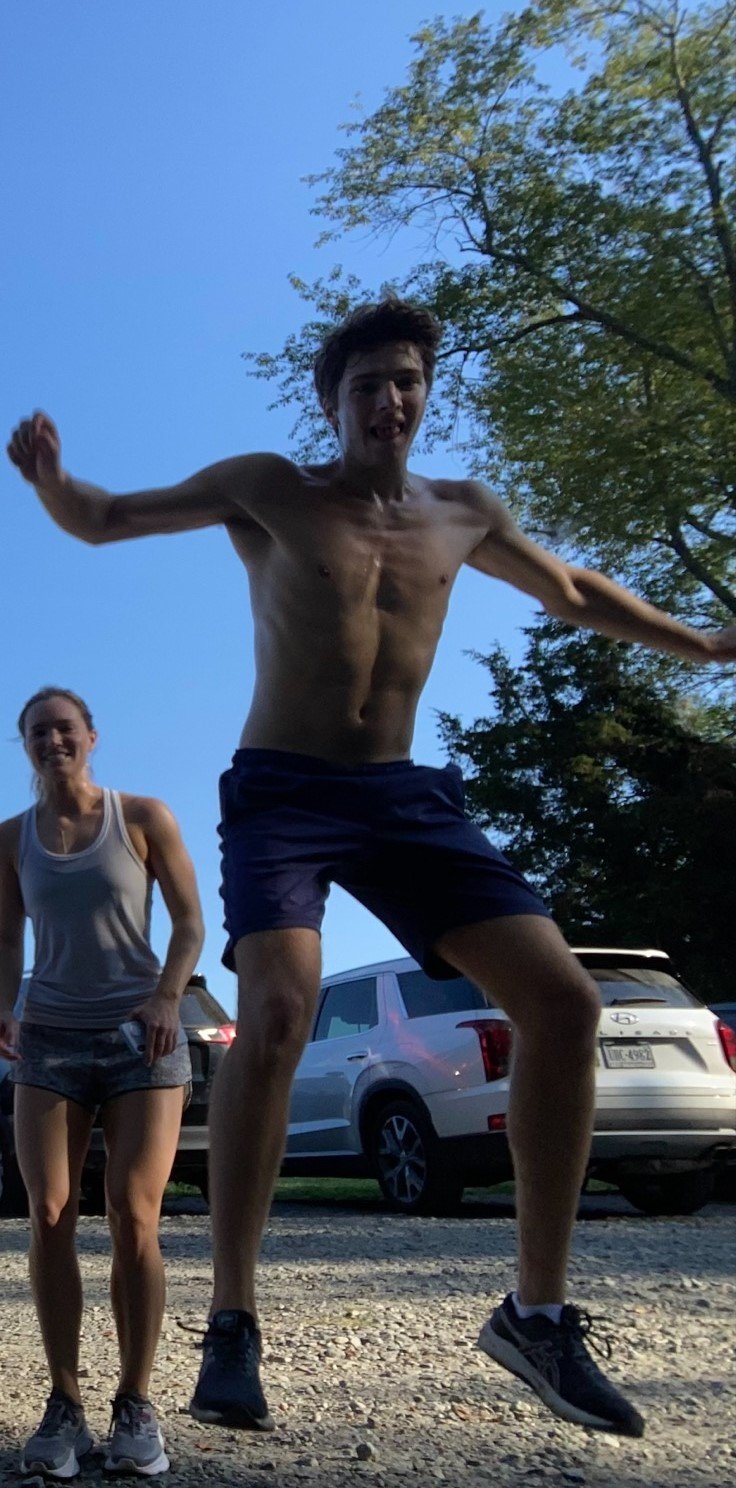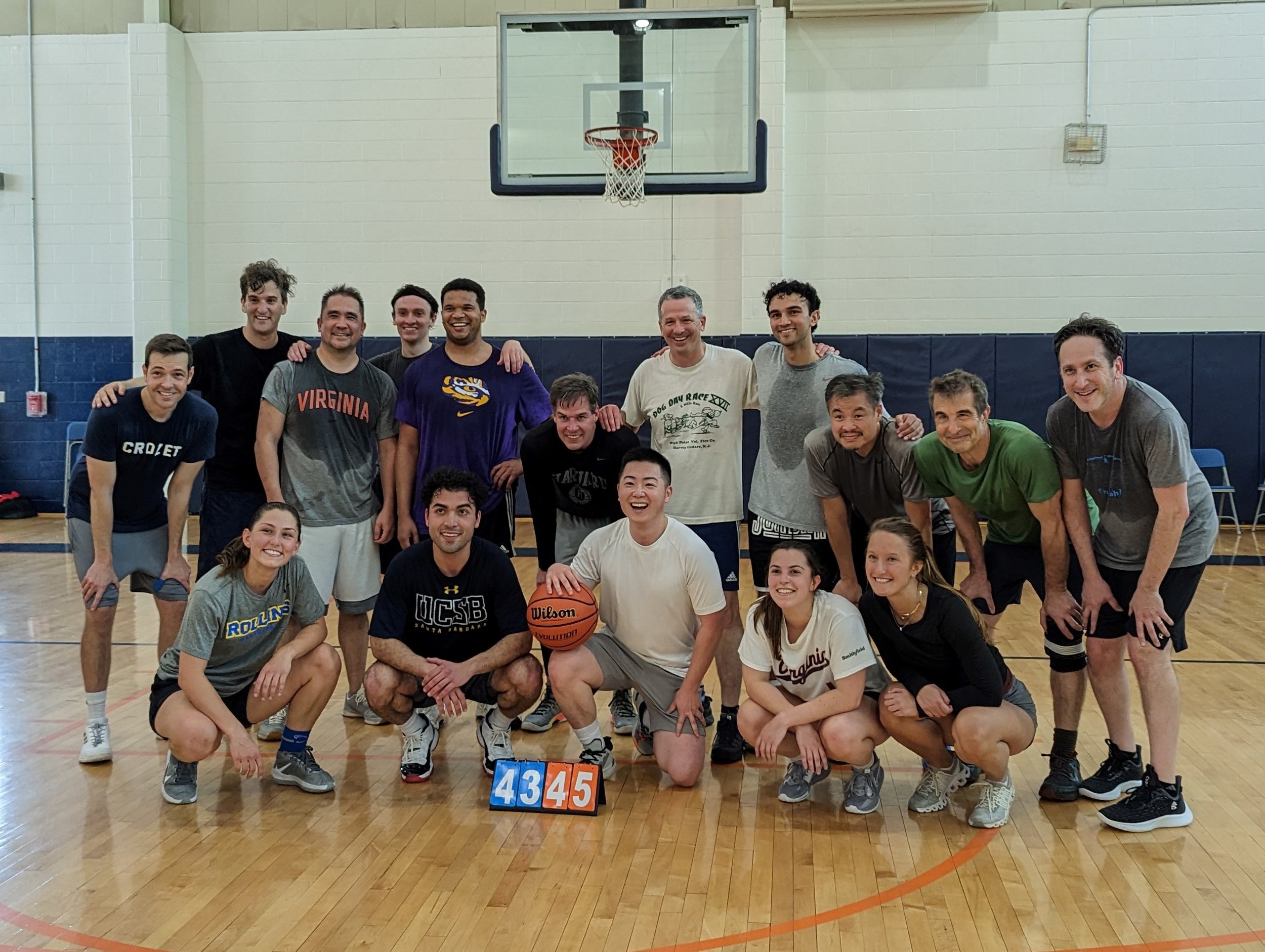Jon Peterson '23
Executive Editor Emeritus
Humans: The Thiccest of the Apes
Jon Peterson
Word Count: 1413
Humans: The Thiccest of the Apes
To cap off what has been, for me, an animal-related pet project in the Law Weekly, my final article will be about a very familiar animal: humans. We humans think of ourselves as relatively fragile yet extremely intelligent animals—ones which survived and thrived in large part due to our brains. And while this isn’t entirely false, it overlooks many of the astonishing physical characteristics of humans. So, what was it, physiologically, that made humans apex predators?
Before our ancestors began crafting the tools involved in projectile-based hunting, they engaged in a more terrifying sort of hunting. Persistence hunting—the same style of hunting utilized by African painted dogs—involves chasing an animal during the hottest part of the day until the animal collapses from heat exhaustion. This is possible because of a suite of adaptations, all with one purpose in mind: endurance. As a result, humans are, physiologically, one of the best hot climate distance runners in the animal kingdom (excluding, perhaps, pronghorns and ostriches).
Pictured: An Ape.
Photo Credit: Jack B. '23.
Thermoregulation
There are three broad categories of adaptations that have made humans so freakishly good at running long distances. Perhaps the most unique adaptation humans have undergone is something most of us probably hate: sweating.
Humans are undeniably the best sweaters in the animal kingdom, and it’s hardly even close.[1] We have three types of sweat glands—eccrine, apocrine, and apoeccrine. For the latter two, suffice it to say that apoeccrine sweat glands are relatively unstudied, and apocrine sweat glands are what create the tell-tale scent of “body odor.”[2]
Humans have between two and four million eccrine sweat glands located all over our bodies.[3] Instead, eccrine sweat glands create a layer of water—sweat—on the body which evaporates. In this process, heat from our body is transferred into the sweat through contact with our skin. This draws heat from the body into the sweat, cooling us down. The special benefit here is that we, unlike mammals that thermoregulate through panting, can cool ourselves while simultaneously engaging in strenuous physical activity. So, while prey animals struggled to regulate their body temperatures as they ran from human hunters, we remained comfortable. The hunting strategy, essentially, was to utilize our higher heat tolerance to induce heat stroke in prey animals by forcing them into an endurance race. Picture the tortoise and the hare, except the tortoise wants to murder the hare. Every time the hare pauses to rest, thinking he’s lost the tortoise, he sees the tortoise cresting the horizon, plodding towards him, indefatigable.
Other adaptations increase the effectiveness of our cooling system. For one, our bodies are taller when compared to australopithecines and other modern apes. This creates a higher surface-area-to-body-mass ratio in humans. This means more surface area for sweat to work its magic and cool us down.[4] Additionally, the bone structure in our heads facilitates cooling. Deoxygenated blood draining from our head travels close to the skin and is cooled by sweat. The veins which carry this cooled blood pass near our carotid arteries. Heat exchange occurs between the veins carrying cooler deoxygenated blood back towards the heart and the carotid arteries carrying oxygenated blood towards the brain. This cools the oxygenated blood, and thus our overall temperature.[5]
Pictured: An ape shortly before demonstrating shock absorption.
Photo Credit: Jackson G. '23.
Shock Absorption
Humans have multiple adaptations designed to limit the wear and tear we experience when running long distances. The vast majority of these involve developing bones with proportionally larger surface areas compared to our ancestors and relatives. Our vertebrae and disks are larger in diameter; the connection between the pelvis and spine is stronger and larger; we have larger surface areas in our hips, knees, and ankle joints; and we have an enlarged heel bone—all of this aids in shock absorption by distributing impacts over larger surfaces throughout the body, collectively limiting the overall impact to any one area.[6] Additionally, we have a ligament running from the back of our skull down to the thoracic vertebrae. This also acts as a shock absorber.[7]
The importance of shock absorption should not be understated. Typical marathon runners average about 40,000 steps.[8] When you realize that running is really just kicking the ground over and over again, doing that 40,000 times doesn’t even sound feasible. But 26.2 miles is an arbitrary number and not even close to the limits of human endurance. The Tarahumara tribe, or as they refer to themselves, the Rarámrui—“those who run fast”—are accustomed to running 200 miles over the course of several days without stopping to rest.[9] If a marathon is equivalent to kicking the ground 40,000 times in a row, a 200 mile run equals a staggering 305,000 kicks. And that’s entirely within the realm of the possible for humans.
Pictured: An ape swinging from a vine.
Photo Credit: Jackson G. '23.
Efficiency
Finally, our bodies have changed to accommodate the dynamics of running more efficiently. First, our heads are more balanced for running than australopithecines—flatter faces with smaller teeth and noses have shifted the center of mass in our heads backwards.[10] And, our shoulders have been “decoupled” from the head and neck. This allows us to rotate our bodies while aiming our heads forward while running.[11] Further, our longer torsos permit our upper and lower bodies to move independently of each other—enabling us to counteract the movement of our legs by swinging our arms.[12] Our shorter forearms also make it easier to keep our arms flexed in a running position for a long period of time, while our longer legs enable us to take huge strides.[13] Working alongside these long legs, our ligaments—namely the Achilles tendon—act as springs that “store and release mechanical energy” when we run.[14] Finally, the arrangement of our feet makes the whole thing more rigid, allowing us to push off the ground more efficiently and utilize our spring-like ligaments.[15]
However, the titular trait—our butts—brings us to perhaps my favorite fact. The very respected researcher who I am citing is quoted saying that human buttocks “are huge” and that apes “have no buns.”[16]We callipygian creatures are certainly well-endowed. Those glutes that we hone in the gym are evolutionarily critical for stabilization when running. Humans lean forward at the hip when we run—without our big booties, we’d be falling face-first. So, thank your bloodthirsty persistence hunting ancestors for your butt. Get out to The Corner and work it, you killing machine.
---
jtp4bw@virginia.edu
[1] Horses also sweat, but much less effectively because they have retained a coat of hair. Our hairlessness actually aids significantly when it comes to sweat’s ability to cool us down.
[2] Lindsay B. Baker, Physiology of Sweat Gland Function: The Roles of Sweating and Sweat Composition in Human Health, Temperature (Austin) (2019), https://www.ncbi.nlm.nih.gov/pmc/articles/PMC6773238/.
[3] Id. It is also a common myth that we can “sweat out” toxins. Eccrine sweat (the vast majority of the sweat we produce) is mostly water and salt. There are some minute changes that can take place; however, these are to aid in the thermoregulatory function. Excretory functions in the body—getting rid of toxins—are almost exclusively undertaken by the liver and kidney. So, unfortunately, a trip to the sauna to cope with a hangover really isn’t doing much to help you “sweat out” whatever it is you’re feeling. Id.
[4] How Running Made Us Human: Endurance Running Let Us Evolve to Look the Way We Do, Science Daily (Nov. 24, 2004), https://www.sciencedaily.com/releases/2004/11/041123163757.htm [hereinafter “Science Daily”]. For a dive into the prevalence of this surface-area-to-body-mass ratio, check out Allen’s Rule. Allen’s Rule, Wikipedia, https://en.wikipedia.org/wiki/Allen%27s_rule (last visited Apr. 23, 2023).
[5] Science Daily, supra note 4. Great white sharks do the exact same thing, but to achieve the opposite effect: warming. White sharks heat their blood through a “countercurrent exchanger.” Heat is generated from the shark’s swim muscles. Deoxygenated blood flows near those swim muscles, capturing their heat. This blood then flows near colder oxygenated blood from the gills, transferring the heat. This allows the shark to keep a body temperature higher than that of the water around it. Perhaps law students have more in common with white sharks than just their ruthlessness and lack of morals. Are Great White Sharks Cold-Blooded or Warm-Blooded?, Animal Cosmos, https://animalscosmos.com/are-great-white-sharks-cold-blooded-or-warm-blooded/#:~:text=Endotherms%20sharks,temperature%20above%20the%20surrounding%20water (last visited Apr. 23, 2023).
[6] Science Daily, supra note 4.
[7] Id.
[8] How Many Steps Are in a Marathon and Half-Marathon?, Proud to Run, https://proudtorun.org/how-many-steps-in-a-marathon/ (last visited Apr. 23, 2023).
[9] Matt Davis, Why Endurance Running Is Humanity’s Surprising Hidden Talent, Big Think (Oct. 31, 2018), https://bigthink.com/life/humans-best-endurance-runners/.
[10] Science Daily, supra note 4.
[11] Id.
[12] Id.
[13] Id.
[14] Id.
[15] Id.
[16] Id.
















